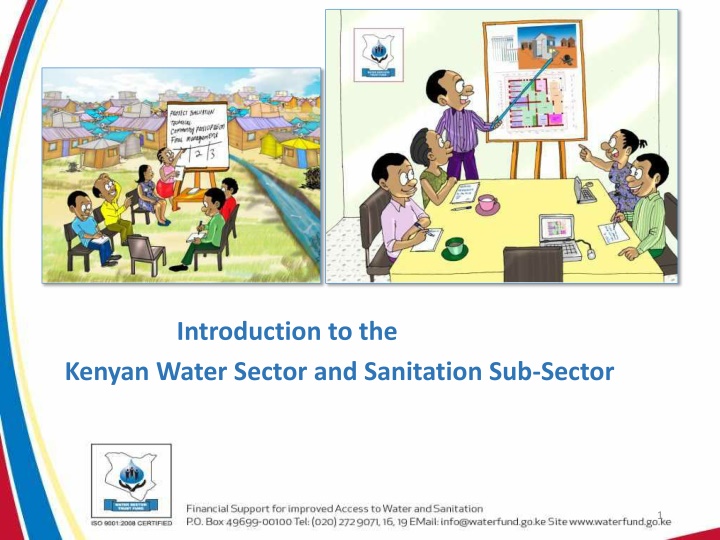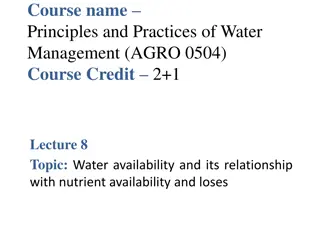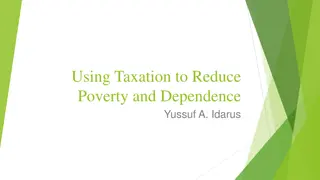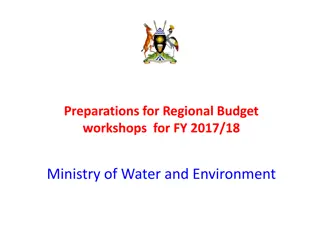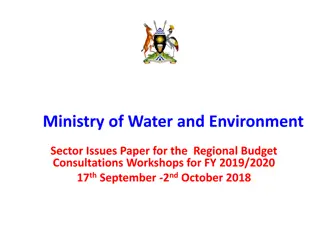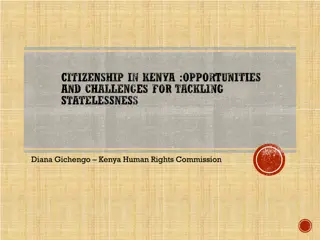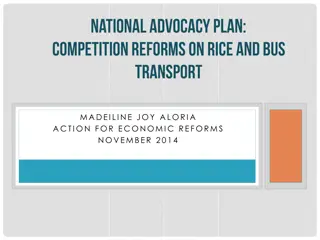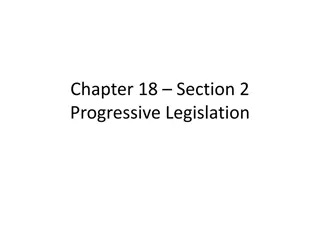Evolution of the Kenyan Water Sector: Reforms and Innovations
The Kenyan water sector has undergone significant reforms and institutional changes over the years. Beginning with the establishment of the Ministry of Water in 1974, followed by the enactment of the Water Act 2002 and subsequent reforms, new institutions such as WASREB, WSBs, WRMA, and WSPs were created to regulate, manage, and provide water services. The institutional setup was further reviewed in 2016, emphasizing policy formulation, asset development, regulation, and provision of water services. These initiatives aim to enhance water resource management and development in Kenya.
Download Presentation

Please find below an Image/Link to download the presentation.
The content on the website is provided AS IS for your information and personal use only. It may not be sold, licensed, or shared on other websites without obtaining consent from the author.If you encounter any issues during the download, it is possible that the publisher has removed the file from their server.
You are allowed to download the files provided on this website for personal or commercial use, subject to the condition that they are used lawfully. All files are the property of their respective owners.
The content on the website is provided AS IS for your information and personal use only. It may not be sold, licensed, or shared on other websites without obtaining consent from the author.
E N D
Presentation Transcript
Kenyan Water Sector and Sanitation Sub-Sector Introduction to the 1
Background Before 1974, water was managed by the Department of Water Development (DWD) which was housed in various ministries including Public Works, Natural Resources and Agriculture. In 1974 the Government upgraded the DWD in Ministry of Agriculture s into a full Ministry of Water. In 1999 the Ministry developed a National Water Policy (Sessional Paper No. 1 of 1999), which was adopted by Parliament in April, 1999 to provide the policy direction on Water Resources Management and Development. The Policy induced the water sector reforms, moved Ministry from direct service provision to policy formulation, resource mobilization and coordination functions. Regulation of water services and Water Resource management were also made as separate functions. To implement the Policy and water sector reforms, Water Act, Cap 372 was repealed and the Water Act 2002 was enacted. 2
The water sector reforms The Water Act 2002 was gazetted in 2003 and implementation began in 2004 During 2004 to 2005, new institutions were established and given legal mandates according to the Act These institutions include the: Water Services Regulatory Board (WASREB) - regulation of water services Eight (8) Water Services Boards (WSBs) - asset holding and development Water Services Trust Fund (WSTF) - pro-poor basket fund of water sector Water Resources Management Authority (WRMA) - WRM and development Water Service Providers (WSPs) - provision of Water Services The transfer plan was approved in July, 2005 and the Ministry of Water and Irrigation initiated the transfer of mandates, assets and personnel to the new institutions 3
The water sector reforms The reviewed institutional set up includes (Water Act 2016): Ministry of Water and Irrigation Services (State Department of Water) - policy formulation, coordination (Ministry re-created in 2015) Water Services Regulatory Board (WASREB) - regulation of water services Water Works Development Agency - asset development (national) Water Sector Trust Fund (WSTF) - pro-poor basket fund of water sector Water Resources Authority (WRA) - regulation of water resources Water Resources Basin Committees - management and development water resources with Water Resources Users Associations (WRUAs) Water Service Providers (WSPs) - provision of Water Services with county government (county or cross county) Water Harvesting and Storage Authority - water storage and flood control Kenya Water Institute (KEWI) - training and research 4
The Ministry of Water and Irrigation Services The core functions of the Ministry are: Water Resources Management Policy Water Catchment Area Conservation, Control and Protection Water and Sewerage Services Policy Water Quality and Pollution Control Policy Waste Water Treatment and Disposal Policy Flood Control and Land Reclamation/Regional Development Policy Dam Construction and Management Onsite Sanitation Management Management of Public Water Schemes & Community Water Projects 6
The Water Resources Management Authority (WRMA) WRMA is charged with responsibility for: Managing, (this will go to Basin Water Resource Committees + WRUAs) Regulation Protecting (this will go to Basin Water Resource Committees +WRUAs) Apportioning and Conserving water resources, including trans-boundary+ sea waters 7
The Water Resources Management Authority (WRMA) (continued) For WRMA to achieved its mandate, the country is divided into the following six regions: Lake Victoria North Catchment Lake Victoria South Catchment Rift Valley Catchment Athi Catchment Tana Catchment Ewaso Nyiro North Catchment Catchment Area Advisory Committees (CAACs) work is to help the WRMA in water and environmental conservation activities through the regional managers 8
The Water Services Regulatory Board (WASREB) The regulatory role of the WASREB includes: Issuing licenses Setting service standards Providing guidelines for setting tariffs Providing mechanisms for handling complaints The responsibility for providing water and sewerage services is vested to the 47 Counties The Water Service Boards (WSBs) are still responsible for asset development during the transition period to full devolution of water services. In the previous Water Act 2002,their roles were regulators, managers, operators, developers of assets and appointers of WSPs. 9
The Water Service Providers (WSPs)-County + Cross County WSP is defined as a company, non-governmental organization or other organization providing water services under and in accordance with an agreement with a licensee (the Water Services Regulatory Board) The key responsibilities of the WSP are: Provision of water services within the area specified in the license Operation, maintenance and development of County assets for water service provision Complying with quality standards and service levels Billing and revenue collection Phanuel Matseshe, HSC (Quality Assurance Manager) 9/7/2024 10
The Water Sector Sector Trust Fund The objectives of the proposed Water Sector Trust Fund (which is supposed to replace the Water Services Trust Fund) is to assist in the financing water resources management and development of water services for poor including: Community level initiative for the sustainable management of water resources Development of water services in rural areas considered commercially unviable for provision of water services by licensees Development of water services in the under-served poor urban areas Research activities in the areas of water resources management and water supply, sewerage and onsite sanitation
Cooperating Partners of the WSTF The cooperating partners of the WSTF include the following: Government of Kenya GIZ (German International Cooperation) KfW (German Development Bank) Bill and Melinda Gates Foundation European Union Sida (Government of Sweden) Danida (Government of Denmark) UNICEF (United Nations Children's Fund) WSP (Water Sector Programme of the World Bank) AfDB (African Development Bank) K-Rep Bank Phanuel Matseshe, HSC (Quality Assurance Manager) 9/7/2024 12
The Constitution of Kenya 2010 The Constitution of Kenya (CoK) 2010 establishes two forms of government: Central Government (responsible for water resources conservation and management) County Government (responsible for water supply, sewerage and onsite sanitation service provision) The constitutions delineates services that will be provided at the two levels of government and provision of water and sanitation services is the role of the County Governments
The Water Act 2016 It is an Act of Parliament to provide for water management and development of water and sewerage services and repeal of the Water Act 2002 The Water Act 2016 has now been enacted and awaits operationalization. The Water Act 2016 provides for the right of every Kenyan to safe water and sanitation (CoK 2010, Bill of Rights)!!
